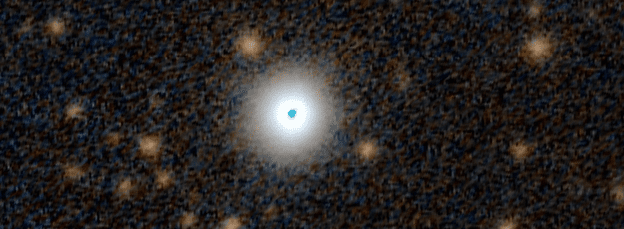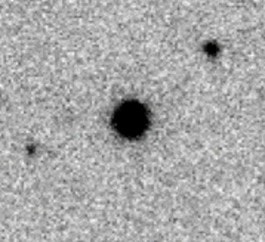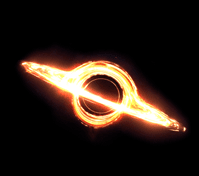Black holes of various diameters are interesting. They develop from big stars collapsing, and some devour materials from its environs to become huge. Supermassive black holes are among the largest black holes in the universe.
Supermassive black holes weigh millions to billions of times the sun. Most galaxies, including ours, have them in their cores. Scientists think supermassive black holes are necessary for galaxy formation and development.
These space entities are incomprehensible. Astronomers struggle to examine them because of their enormous distance. Nonetheless, scientists study these interesting phenomena to understand the universe’s development and black holes’ role in it.
Black holes are some of the largest objects to exist, weighing millions to billions of times our sun. They help galaxies develop and evolve in their cores. The greatest black holes intrigue scientists and stimulate new cosmos discoveries. Here are the 7 largest black holes in the universe.
-
H1821+643
Solar Mass: 3×1010
Distance from Earth: 3.4 gigalight-years
Remarks: Density if 1% of air at Earth sea level
 Source: Wikimedia
Source: Wikimedia
H1821+643, a supermassive black hole in Draco, is 620 million light-years from Earth. It is the sixth biggest black hole ever detected, with a mass estimated at 28 billion times the Sun.
The Sloan Digital Sky Survey, which surveyed over 500 million celestial objects, discovered H1821+643. This scan found a supermassive black hole-powered quasar in 2018.
H1821+643 is one of the brightest quasars, having a brightness of 3.3 trillion times the Sun. Its brightness and size make it an attractive target for investigating supermassive black holes and galaxy development.
Supermassive black holes like H1821+643 help us comprehend galaxies and challenge our gravity and spacetime theories. Astronomers may test physics by studying stuff near these huge objects.
Did You Know?
H1821+643 devours stuff at a surprising pace. The black hole consumes one Sun every day, 10 times quicker than comparable supermassive black holes. The black hole’s accretion disk heats stuff to billions of degrees, releasing X-rays and gamma rays.
-
SDSS J102325.31+514251.0
Solar Mass: 3.31×1010
Distance from Earth: 3.46 gigalight-years
Remarks: Accretion disk in in process of being consumed
 Source: Wikimedia
Source: Wikimedia
SDSS J102325.31+514251.0 is a 700-million-light-year-away black hole in Ursa Major. Astronomers estimate its mass at 3.31 billion times that of our sun, making it the sixth biggest black hole.
Scientists detected the black hole in 2011 using Sloan Digital Sky Survey data (SDSS). Powered by matter accreting onto a supermassive black hole, it was a quasar.
Astronomers may test general relativity and other basic physics ideas using SDSS J102325.31+514251.0. The black hole’s strong gravity may bend and distort light, testing Einstein’s general relativity theory.
Did You Know?
The black hole may have originated by merging smaller black holes. The black hole’s mass would increase after several mergers.
-
SMSS J215728.21-360215.1
Solar Mass: (3.4±0.6)×1010
Distance from Earth: 1.25 gigalight-years
Remarks: Discovered in 2018
 Source: Wikimedia
Source: Wikimedia
Astronomers found the fifth-largest black hole. SMSS J215728.21-360215.1, a huge black hole, illuminates these mysterious creatures.
The SkyMapper telescope at Siding Spring Observatory in Australia detected SMSS J215728.21-360215.1. This telescope searches the southern sky for uncommon objects like black holes. Spectroscopy measured SMSS J215728.21-distance 360215.1’s and characteristics.
Its massive size distinguishes SMSS J215728.21-360215.1. The black hole weighs 34 billion times the sun. To compare, the black hole at the heart of our Milky Way galaxy weighs around 4 million times the sun.
Did You Know?
SMSS J215728.21-360215.1 opens new scientific avenues. Scientists will use several telescopes and devices to investigate the black hole.
-
S5 0014+81
Solar Mass: 4×1010
Distance from Earth: 1.2 gigalight-years
Remarks: Discovered in 2009
 Source: Wikimedia
Source: Wikimedia
In the high declination area of Cepheus, some 12.07 billion light-years from Earth, lies S5 0014+81, a blazar and the most energetic form of active galactic nuclei.
With around 1041 watts of intensity, it is the sixth brightest quasar discovered to date. In comparison to the stars in our galaxy, this one is 25,000 times brighter.
The mass of the center black hole was determined in 2009 using data from the Neil Gehrels Swift Observatory. Scientists determined that its event horizon is 236.7 billion kilometers wide, which is 40 times the radius of Pluto’s orbit, making it 40 times more massive than our Sun.
Did You Know?
Extreme violence is at work in the blazar’s primary black hole, which devours around 4,000 solar masses of matter per year.
-
IC 1101
Solar Mass: (4–10)×1010
Distance from Earth: 1.04 gigalight-years
Remarks: IC 1101 is one of the largest galaxies in the universe
 Source: Wikimedia
Source: Wikimedia
Massive elliptical galaxy IC 1101 is 1.04 billion light-years distant in Virgo. It contains billions of stars and spans over 6 million light-years. IC 1101’s supermassive black hole, considered to be the third-largest ever seen, is its main attraction.
IC 1101’s supermassive black hole may weigh 40 billion times the sun. It’s bigger than the Milky Way’s black hole, which weighs 4 million suns. TON 618, with a mass of 66 billion suns, and S5 0014+81, with 40-70 billion suns, are the only black holes bigger than IC 1101.
Did You Know?
The Hubble Space Telescope’s core area studies revealed IC 1101’s supermassive black hole. This object is a supermassive black hole because of its size and mass.
-
Holmberg 15A
Solar Mass: (4.0±0.8)×1010
Distance from Earth: 700 million light years
Remarks: Host galaxy has largest core observed at 15,000 light years
 Source: Wikimedia
Source: Wikimedia
The Holmberg 15A galaxy’s central supermassive black hole is 700 million light-years from Earth. The second-largest black hole in the cosmos has a mass of 40 billion times that of our Sun.
Holmberg 15A, discovered in 1997 by German astronomer Rolf-Peter Kudritzki, is unique and crucial to research because to its large size. The black hole’s size and position influence its host galaxy’s development.
Holmberg 15A’s size and behavior have perplexed scientists for years. The black hole’s mass and effect on the galaxy are unknown. Some scientists think Holmberg 15A grew by merging with other black holes, while others think it created when the first galaxies formed.
Did You Know?
The enormous elliptical galaxy Holmberg 15A’s black hole regulates matter and energy movement. As it approaches closer, the black hole’s gravitational force warps space-time, bending matter and light.
-
TON 618
Solar Mass: 4.07×1010
Distance from Earth: 10.8 gigalight-years
Remarks: At the center, mass is at 64 billion solar masses
 Source: Wikimedia
Source: Wikimedia
TON 618, a quasar in Canes Venatici, is approximately 10.4 billion light-years from Earth. It is the largest black hole in the universe. Maarten Schmidt discovered TON 618 in the late 1950s using the Palomar Observatory’s 200-inch telescope. It was a quasar with a supermassive black hole at its heart.
TON 618 has shown supermassive black hole genesis and evolution in galaxies. The black hole in the core of TON 618 expanded swiftly in the early universe, suggesting it formed by “direct collapse” rather than matter accretion. This finding illuminates black hole genesis and its circumstances.
TON 618 offers scientists a unique view into the early cosmos and the processes that formed galaxies and black holes, despite its great distance from Earth. TON 618’s discovery and study have led to fresh research and insights into astronomy’ most basic concerns.
Did You Know?
Quasars produce tremendous quantities of energy from a galaxy’s supermassive black hole. TON 618, one of the brightest and most massive quasars, is 140 trillion times brighter than the Sun. The quasar’s supermassive black hole accretes matter, causing its tremendous brilliance.
RELATED READINGS
11 Largest Stars in the Universe
10 Largest Galaxies in the Known Universe
10 Largest Objects in the Universe
